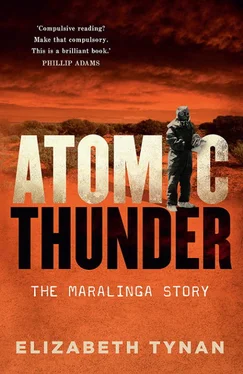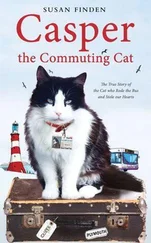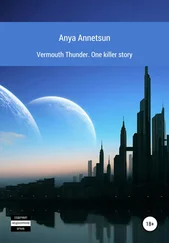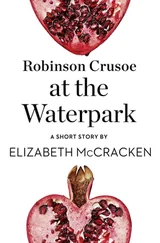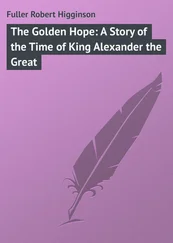The discrepancy could not be explained away by different ways of doing things, between countries and across the years. By the time the ARL scientists were on the ground at Maralinga in 1984, the measurement and analysis methods to which they had access were far superior to those available to Noah Pearce and his colleagues who prepared the AWRE report in 1968 that cleared the UK of any further responsibility at Maralinga. The ARL scientists used gamma ray detectors to measure a product of plutonium decay, americium-241, which could be extrapolated to give an exact measurement of plutonium. As Anderson explained in his story, ‘The British had to rely on alpha particle emissions from plutonium which are difficult to detect’. But, as radiation scientist Peter Burns also pointed out in the story, ‘They could have done radiochemistry analysis of the soil which would have given a more accurate reading of plutonium’. In addition, the British had had the results of the Roller Coaster trials, so they would have known the likely levels of plutonium.
Not long before his death in 1993, Moroney, who planned to write what he knew, prepared several aides memoire to this end. They reveal that he was always careful to ensure that the latter-day reader would understand the mindset of the times that led to the creation of the Maralinga test site. ‘A major ingredient in depicting the general background is to convey some sense of the perceptions of the period, which, I suppose, allowed these nuclear tests to be conducted essentially as military operations, with the expectation on personal compliance and commitment that this implies.’
A long period of analysis of the Maralinga site had ensued after the 1984 ARL visit. The ARL scientists discovered a major discrepancy between the levels of contamination claimed in the Pearce Report and what they found on the ground, sparking years of investigation that culminated with Moroney’s detailed examination of Roller Coaster records. The americium-241 levels obtained by the ARL scientists showed the Pearce Report data about plutonium levels were incorrect. Moroney’s analysis of Roller Coaster later confirmed that they were in error by a factor of 10. While the Pearce Report claimed that about 20 of the 22 kilograms of plutonium had been buried, an estimated 20 kilograms was later found to be scattered around the site.
MARTAC, set up in 1993 to oversee clean-up of contamination at the site, extended and corroborated the readings from the 1984 ARL visit and Moroney’s analysis. The MARTAC team found the ‘contamination of the lands consisted of fine particulate of plutonium and fragments of paraffin wax, lead, light alloys and plastic with plutonium plated on them’. In other words, the site was a dangerous mess. MARTAC also noted that ‘it was the experimental set-up of the Vixen B trials that made them the principal source of lasting environmental contamination’.
Moroney heard from Williams about the prospective New Scientist story and was keen to co-operate. By then he had been crunching the Roller Coaster numbers for a couple of years, and sending what he had found to his Australian Government contacts, notably Pat Davoren, then manager of the Test Site Management Unit of the Department of Primary Industries and Energy. He also started preparing a briefing paper in response to the developing New Scientist story. He noted that the ‘inadequacies and gross inconsistencies’ in the set of plutonium field data used for Operation Brumby ‘were not resolved between the UK and Australia at the time, even after extended re-analysis and debate’. This absence of proper contamination data for the site was a catastrophe. Moroney maintained that it was not a simple mistake. The Roller Coaster results meant that the ‘AWRE knew of… the error involved’, but these results ‘were the subject of military security at the time and not accessible to Australia’.
These errors resulted in considerable confusion and misinformation about plutonium contamination at Maralinga. The Roller Coaster trials gave Moroney the ammunition he needed to support the Australian Government in rejecting the 1968 agreement. In a letter to Davoren on 28 November 1991, Moroney gave his ‘fast first pass through the Roller Coaster information’. Before commencing RADSUR, the 1966 radiological survey, and Brumby, the 1968 clean-up, he concluded, the AWRE certainly knew that » α-survey [alpha-survey] monitoring of Pu [plutonium] fallout on soil can be expected to underestimate the Pu surface density by an order of magnitude, even when the survey is made in the day or so immediately following deposition; and
» less than 20% of the Pu used in the Vixen B trials can be expected to have remained in the debris in the locality of the firing pads.
It follows from this that AWRE also knew that:
» all of the post-firing α-survey data from Vixen B trials were low by at least a factor of ten;
» the areas of Pu contamination at Taranaki to be cleaned up in BRUMBY were greater, by an order of magnitude, than as indicated by the results of the post-firing α-surveys; and
» the burial pits at Taranaki contained no more than 15% to 20% of the Pu used in the 12 firings.
Those few lines written to Davoren distilled what Moroney had deduced from the Roller Coaster pages. His analysis discovered the key to understanding what damage Vixen B had done. He subsequently supplied this information to Ian Anderson, and it provided the backbone for his article. Moroney’s analysis was later confirmed by MARTAC.
In his letter to Davoren, Moroney observed, ‘I know that the Pu survey work in RADSUR & BRUMBY had its problems, but I still find it galling that it was so bad that it couldn’t even pick-up an error of such huge dimensions’. Moroney signed off his letter with the handwritten words ‘good luck’.
The analysis showed that the Australian authorities had not possessed all the relevant facts before signing the 1968 agreement. The accumulated data from the 1984 expedition and from Roller Coaster data produced an irrefutable case for the British to help fund a major site clean-up. Simon Crean and Gareth Evans were armed with these facts as they prepared to negotiate with the British for compensation. Behind-the-scenes wrangling over this issue had been going on for several years, with expert input from Moroney. The Australian Government alerted the British Government that it had the Roller Coaster data in December 1991.
The moves to deal with the contamination began in the wake of the Royal Commission when a group known as the Technical Assessment Group (TAG), made up of British, American and Australian scientists and technicians, undertook extensive tests across a range of issues. TAG did not itself include formal Indigenous representation, as suggested by the Royal Commission, although Maralinga Tjarutja people were represented on the Maralinga Consultative Group, a broader forum to discuss all matters concerning the test sites.
TAG carried out six studies from 1986 to 1990, including inhalation studies, flora and fauna surveys and a detailed anthropological study. The group devised 27 clean-up options, preferring one that involved, in part, immobilising the waste in the Taranaki burial pits using an innovative technique known as in situ vitrification. Anderson reported on the outcome of the TAG investigations, in a New Scientist story on 17 November 1990. He highlighted TAG findings that suggested ‘Aboriginal children would receive doses of radiation more than 300 times the accepted limit if they were to live in the most highly contaminated regions of the former British nuclear test site at Maralinga in South Australia’. Anderson’s 1990 story also reported that the Australian Government was seeking compensation from the UK to help cover the cost of the clean-up.
Читать дальше
